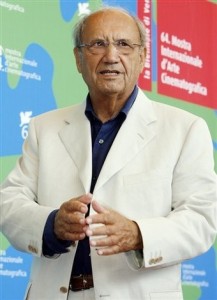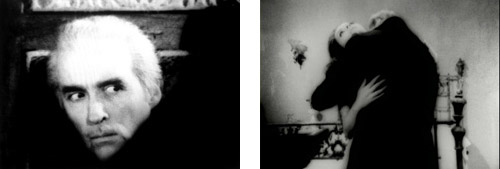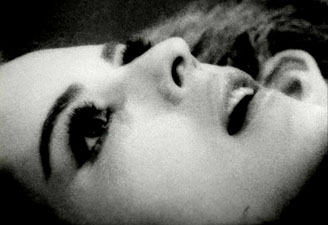This short article was written for the Barcelona newspaper La Vanguardia and published there in Spanish on January 9, 2008. Portabella’s 1970 Vampir-Cuadecuc was written about by James Naremore in the Summer 2008 issue of Film Quarterly as his second favorite film of 2007. And Portabella, who has his own web site, ihas released a sizable DVD box set devoted to his work.
Portabella in the U.S.
by Jonathan Rosenbaum
It was over 36 years ago, in Cannes, that I first encountered the singular cinema of Pere Portabella, a revelation that came via his second feature, Vampir-Cuadecuc. Living at the time in Paris, I knew absolutely nothing about Catalan culture under Franco, and had only the film’s sounds, images, and Portabella’s wit in juxtaposing the two as my guides. The only contextual information I had was that Portabella was one of the producers of Luis Buñuel’s Viridiana, and that he couldn’t be present because the Franco government had taken away his passport as punishment for this caprice.
In my festival coverage for the Village Voice, I described Vampir as “the most original movie at the festival and the most sophisticated in its audacious modernism.” A year later, I praised Portabella’s Umbracle [see illustration below] in the same newspaper. But 34 more years were to pass before the first North American retrospective of Portabella’s work — comprising all five of his features at the time —- was held in Chicago, at the Art Institute’s Gene Siskel Film Center. And Portabella had to cancel his personal appearance at this event because by this time, he was busy shooting his sixth feature.
We finally (and briefly) met in New York last September, on the occasion of his first complete retrospective in the U.S. at the Museum of Modern Art. Two days later, I publicly interviewed him a second time, in Chicago, after a screening of his recently completed The Silence Before Bach to a packed house, where the audience was highly appreciative. Soon afterwards, Chicago’s Cervantes Institute showed Portabella’s features on DVD with less fanfare to smaller audiences.
But it would be no exaggeration to say that Portabella remains unknown in the U.S. In an otherwise excellent DVD edition of Viridiana recently released by Criterion, with many bonuses, his name never comes up. Although Vampir had a brief commercial run in New York City in May 1973 and a favorable review in the New York Times, neither of the two chief online archives of film reviews in English, Movie Review Query Engine (which boasts 69,207 film titles) or Rotten Tomatoes, contains a single reference to any Portabella film, even after all the events of the past fall in New York and Chicago.
I believe there are several reasons why Portabella’s work remains mainly unknown here. One key factor is the fact that none of his films has yet become available on video or DVD, or been shown commercially since the brief New York run ofVampir-Cuadecuc.*
The overall absence of knowledge in the U.S. about Spanish cinema in general and Catalan cinema in particular poses an additional obstacle. As absurd as this sounds, American mainstream media has only had room for one Spanish auteur at a time — Luis Buñuel in the Franco period and Pedro Almodovar in the post-Franco period.
Furthermore, American insularity — far more pronounced today than it was during the Cold War — makes many of the most salient facts about Portabella’s background as a state senator who helped to draft the new Spanish Constitution, and who played a role in establishing the European Union, relatively unintelligible. Without this background and context, any clear sense of the already challenging themes and methods of Warsaw Bridge (1990, see above) or The Silence Before Bach (2007) is likely to be attenuated. I’ve read only two capsule reviews of the latter film apart from my own. One, in Inner City News, concludes rather incoherently, “Maybe Portabella’s visual poetry is too advanced for its time. Or maybe it’s self-indulgent, or both. Viva Portabella!” The other, by Richard Brody in The New Yorker, is much better: “Pere Portabella’s new film brings Bach’s music to life with a mysterious, magnificent blend of drama, documentary, and quasi-surrealist whimsy….From puckish humor and borderline kitsch, a great and serious notion emerges: the construction of modern Europe on the basis of classical music, which, as a result, endures tenaciously there.”
*Postscript (November 12, 2008): In fact, another screening of the film was held at Chicago’s Music Box Theater three days ago, to a fairly substantial audience.







